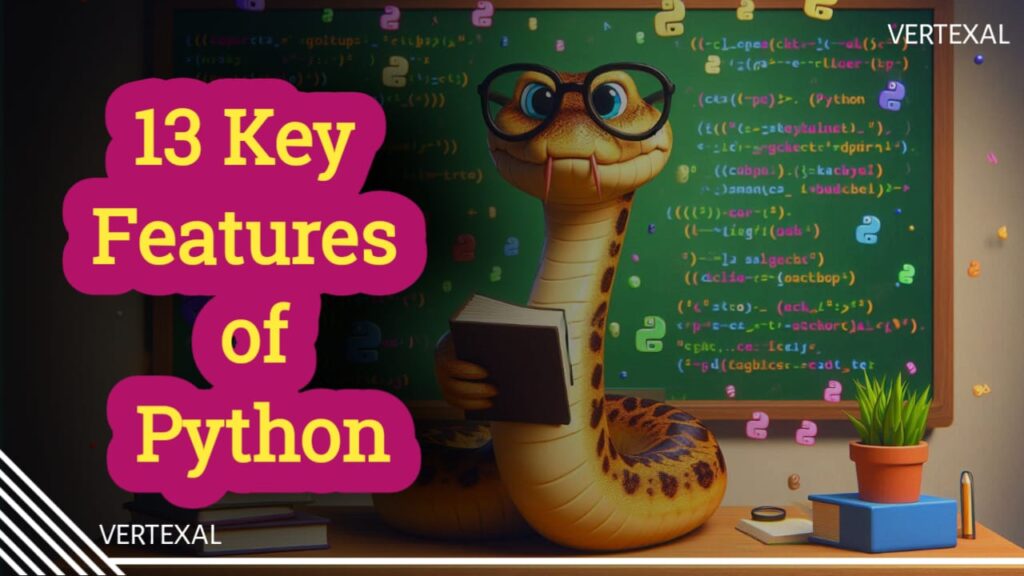Python is a high-level, interpreted programming language known for its simplicity and readability. Created by Guido van Rossum and first released in 1991, Python emphasizes code clarity and allows developers to express concepts in fewer lines of code compared to many other languages.

key features:
- Easy to Read and Write: Python’s syntax is clear and intuitive, making it accessible for beginners.
- Interpreted Language: Python is an interpreted language, which means that code is executed line by line, facilitating quick testing and debugging.
- Dynamically Typed: Variables in Python do not require explicit declaration; types are inferred at runtime, making it flexible.
- Rich Standard Library: Python comes with a comprehensive standard library that provides modules and functions for various tasks, from file handling to web development.
- Object-Oriented: Python supports object-oriented programming (OOP) principles, allowing for the creation of reusable and modular code.
- Cross-Platform Compatibility: Python can run on various operating systems, including Windows, macOS, and Linux, without requiring modifications.
- Extensive Community Support: A large and active community contributes to a wealth of resources, libraries, and frameworks, enhancing Python’s capabilities.
- Versatile Use Cases: Python is widely used in web development, data analysis, artificial intelligence, scientific computing, automation, and more.
- Third-Party Libraries: Python has a rich ecosystem of third-party libraries (e.g., NumPy, Pandas, Flask, Django) that extend its functionality.
- Strong Integration Capabilities: Python can easily integrate with other languages (like C/C++ and Java) and technologies, making it a popular choice for diverse applications.
- Support for Multiple Programming Paradigms: In addition to OOP, Python supports procedural and functional programming, offering flexibility in how to approach problem-solving.
These features make Python a popular choice for both beginners and experienced developers across various domains.
Detailed exploration of Python’s key features
Here’s a more detailed exploration of Python’s key features, expanding on its capabilities and advantages:
1. Ease of Reading and Writing
One of Python’s standout features is its clean and readable syntax. Unlike many programming languages that have complex syntax rules, Python uses whitespace indentation to define code blocks, making it visually intuitive. This design encourages best practices in coding, such as writing clear and maintainable code. As a result, beginners can quickly grasp programming concepts without getting bogged down by intricate syntax.
2. Interpreted Language
Python is an interpreted language, meaning that it executes code line by line. This real-time execution makes debugging straightforward since errors can be identified and fixed as the code runs. This feature is particularly beneficial for rapid development and testing, allowing programmers to prototype quickly and iterate on their solutions.
3. Dynamically Typed
In Python, variables do not require explicit declaration of their data type. The type is determined at runtime based on the value assigned to the variable. This dynamic typing simplifies coding, as developers can write less boilerplate code. However, it’s essential to manage types carefully to avoid runtime errors, especially in large projects.
4. Rich Standard Library
Python comes with a vast standard library that includes modules for various tasks, such as file I/O, regular expressions, web protocols, and data serialization. This extensive library allows developers to implement features without having to write everything from scratch. It also promotes code reuse and reduces development time, making Python a practical choice for many applications.
5. Object-Oriented Programming (OOP)
Python supports OOP principles, enabling developers to create classes and objects. This approach promotes code organization and reusability through inheritance and encapsulation. OOP helps in modeling real-world scenarios, making complex programs easier to understand and manage. The object-oriented nature of Python encourages developers to create modular, reusable components, which enhances collaboration in team environments.
6. Cross-Platform Compatibility
Python is designed to run on multiple operating systems without requiring code modification. This cross-platform capability ensures that developers can write code on one system (e.g., Windows) and run it seamlessly on another (e.g., Linux or macOS). This feature is particularly advantageous for teams with diverse development environments.
7. Extensive Community Support
Python has a robust and active community that contributes to its continuous growth. Numerous forums, documentation, and tutorials are available online, which are invaluable resources for both novice and experienced developers. The community’s support fosters collaboration and knowledge sharing, making it easier to find solutions to programming challenges.
8. Versatile Use Cases
Python is highly versatile, used in various domains such as web development (using frameworks like Django and Flask), data analysis (with libraries like Pandas and NumPy), machine learning (using TensorFlow and scikit-learn), automation, and scientific computing. This adaptability makes it a popular choice across industries, from finance to healthcare and education.
9. Third-Party Libraries
The Python ecosystem boasts an extensive collection of third-party libraries that extend its capabilities. Libraries like Matplotlib for data visualization, Scrapy for web scraping, and PyTorch for deep learning enhance Python’s functionality, enabling developers to implement sophisticated features with minimal effort.
10. Integration Capabilities
Python integrates well with other programming languages and technologies, making it a versatile tool in a multi-language environment. It can easily interface with C/C++ for performance-critical applications and can be embedded in applications written in other languages, facilitating smooth interoperability.
11. Multiple Programming Paradigms
In addition to object-oriented programming, Python supports procedural and functional programming paradigms. This flexibility allows developers to choose the most effective approach for their specific problem domain, enhancing Python’s applicability in various scenarios.
Python’s combination of simplicity, power, and versatility makes it an excellent choice for developers of all skill levels. Its strong community, extensive libraries, and cross-platform capabilities position it as a leading language in modern software development. Whether for web development, data science, or automation, Python provides the tools necessary to build robust applications efficiently.
